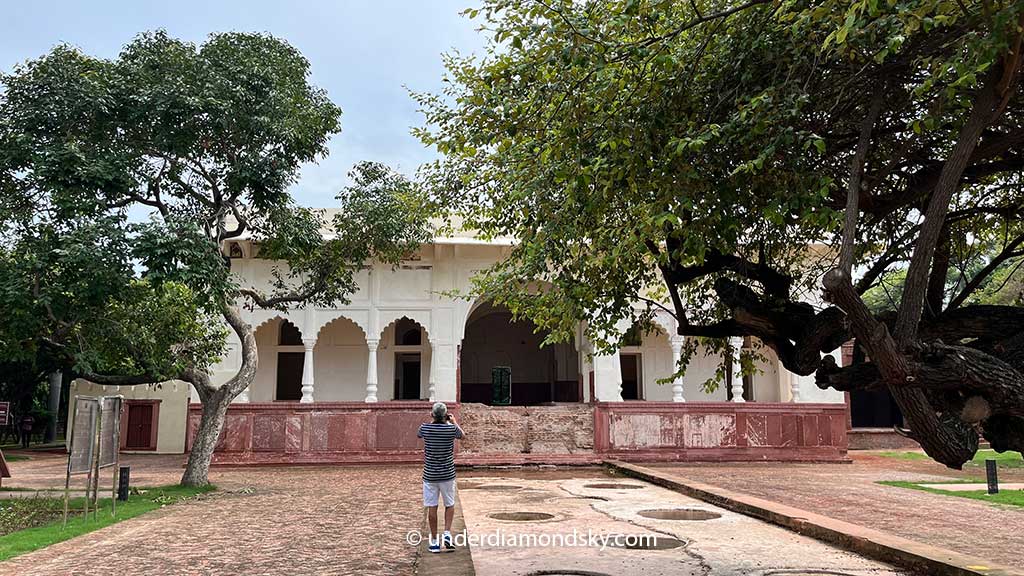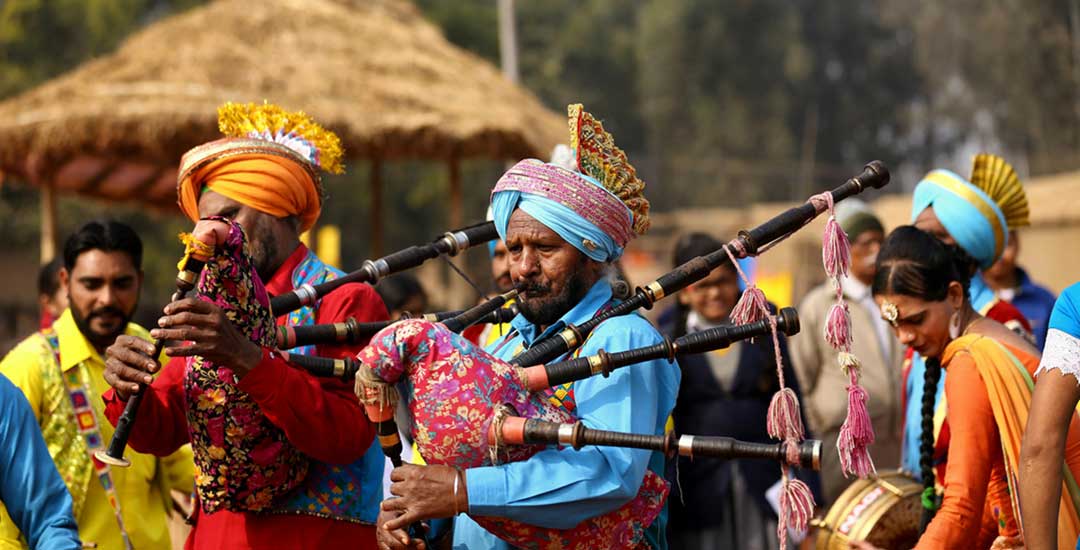When we saw in the newspaper that the government had opened Sheesh Mahal Delhi for visitors, we could hardly believe it. Sheesh Mahal in Shalimar Bagh? Our very own Shalimar Bagh, the same place we pass while going to run errands? We have lived in North West Delhi for years, and this part of the city hardly has any famous monuments. So it was a big surprise, and we decided we must go and see it for ourselves immediately.
How to reach Sheesh Mahal, Shalimar Bagh
We opened Google Maps and searched for Sheesh Mahal, Shalimar Bagh, and Palace of Mirrors, Delhi. The route was easy, and in about 15 minutes we reached Shalimar Bagh. When the map showed “narrow lane ahead”, we left the car there and chose to walk the rest of the way.
That walk was interesting in itself. We passed through a discreet lane lined with small houses, some mechanic workshops, and an odd grocery shop. It didn’t feel like the approach to a Mughal palace at all.
Truth be told, there is some walking involved. We asked the kids playing cricket, and they pointed in the direction of the monument. But again, for a while, there was no sign of Sheesh Mahal. We kept wondering if we were at the right place till we saw a board that should have been somewhere near the entrance and a couple of places en route to the main palace area. Nevertheless, we are happy to confirm – yes, there is a Sheesh Mahal in Shalimar Bagh. And that is Delhi for you – history pops up where you least expect it.
The Mughal Heritage of Sheesh Mahal, Delhi
Once inside the park, we realised this was no ordinary spot. It was backed by solid history. Sheesh Mahal was built in 1653 by Akbarabadi Begum, wife of Emperor Shah Jahan, as part of a royal garden called Aizzabad Bagh. Later, it became known as Shalimar Bagh.

It was a small but exquisite palace, famous for its mirror work, floral motifs, water channels, and fountains – a true reflection of the Mughal idea of paradise. The most fascinating fact? In 1658, Aurangzeb’s coronation took place right here, away from the heavy politics of the Red Fort.
Lost Glory and the latest Restoration
Over time, Shalimar Bagh lost its grandeur. The mirrors vanished, the walls crumbled, the fountains dried up, and nature quietly claimed the space. For centuries, it remained closed to the public.

Then, in early 2024, a restoration project of the Sheesh Mahal was initiated. The Delhi Development Authority (DDA) and Archaeological Survey of India (ASI) reportedly used traditional Mughal techniques – lime surkhi, the thick Lakhori bricks, jaggery, bel, and urad dal paste – to bring back its original charm. However, from what we saw, it was still a work in progress.
On July 2, 2025, after almost 370 years, Sheesh Mahal Shalimar Bagh reopened to the public. The Baradari (a 12-door pavilion) was restored, along with three heritage cottages, and a garden surrounding the structure was ready to welcome visitors.
Walking Through the Palace of Mirrors
We entered through a simple gateway, not expecting much. But as soon as we stepped inside the restored Baradari, it felt like the familiar vibe of Mughal history. The arches were freshly painted, and the lawns outside were neatly maintained. It was clear that a lot of art and craft was lost under the layers of restoration material. Yet, there it was – accessible and another piece of Delhi history brought to the public.
Local children were running across the grass, some elders were chatting under the shade of trees, and we spotted a young couple reading quietly in the corner. There were boards for cafes that were closed, though, and there was still a sense of an unfinished venture. Hope the project is complete soon, and Sheesh Mahal becomes part of Delhi’s regular weekend rhythm.
How to Reach Sheesh Mahal Delhi
By Metro: The nearest stations are Shalimar Bagh, Jahangirpuri, and Haiderpur–Badli Mor. From there, take an auto-rickshaw or walk a while into the Shalimar Bagh District Park.
By Car or Taxi: Enter the park from Outer Ring Road and follow GPS directions. Limited parking is available at the park entrance.
Timings and Entry: Open daily from 11 am to 9 pm, including weekends and public holidays. Entry is free.
Visitor Tips: Carry some refreshments, and do not forget to carry water. Also, certain portions of the monument are rather desolate. Do exercise caution while visiting this place.
Nearby Attractions around Shalimar Bagh
- Coronation Park – Known for Delhi’s royal durbar.
- Mutiny Memorial (Ajitgarh) – Commemorating the 1857 uprising.
- Red Fort, Chandni Chowk, Jama Masjid – Old Delhi is a short drive, where you may find more Mughal heritage.
Why Sheesh Mahal is Worth Visiting
Standing in Sheesh Mahal, we kept thinking – how did such an important place remain hidden for so long? The moment the gate opened, we felt as though we were stepping into a secret chapter of Delhi’s story.
It may not be as grand as Humayun’s Tomb or as famous as the Red Fort, but its history is just as fascinating. Built by a Mughal queen, chosen for a secret coronation, and then forgotten for centuries before its rebirth, Sheesh Mahal Delhi is a reminder that history is often tucked away in the quietest corners.
So next time you want to explore Delhi beyond the obvious, look up Sheesh Mahal, Shalimar Bagh, walk through the palace of mirrors, and try to relive the stories from the past.





0 Comments